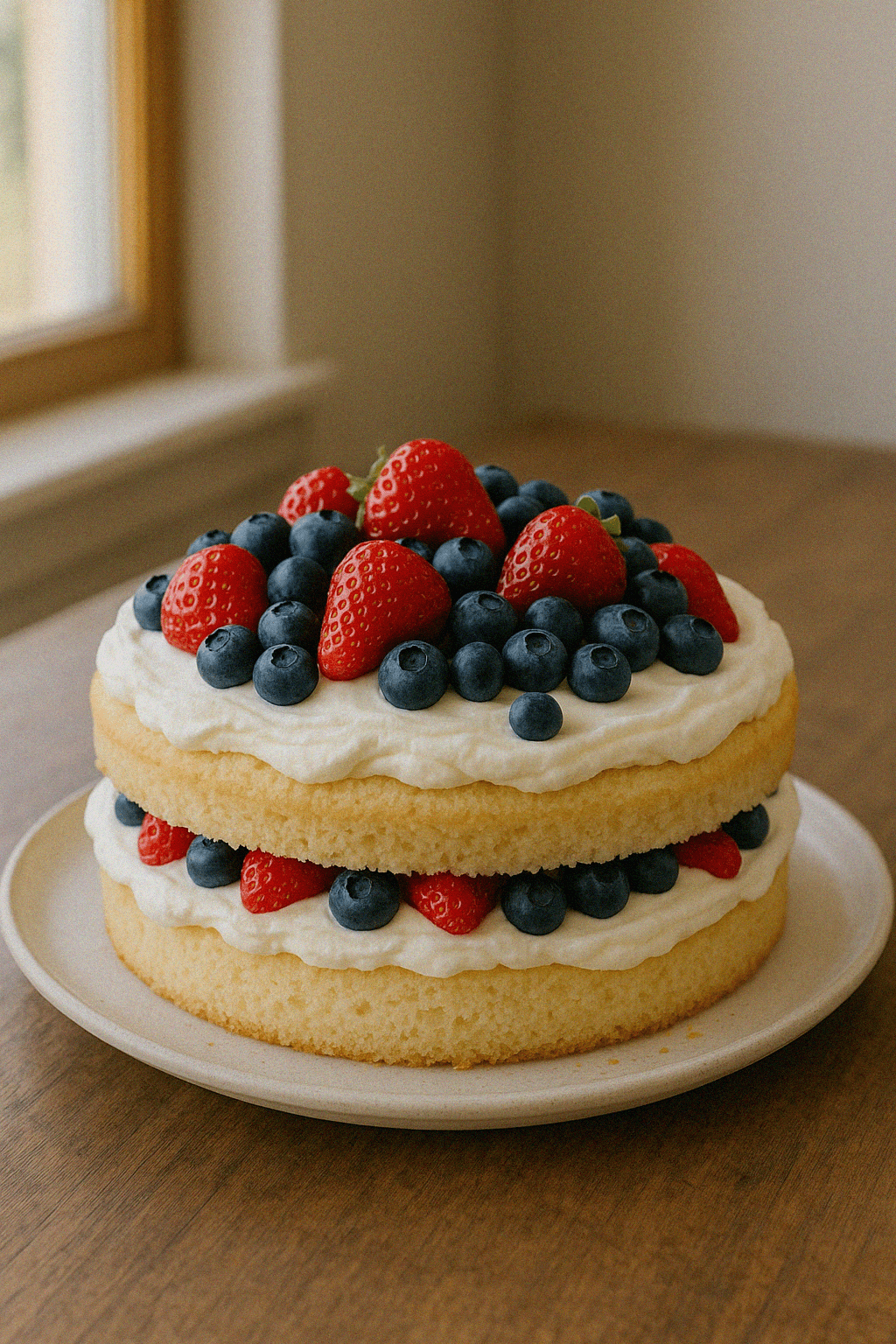Norwegian Cream Cake – A Slice of Celebration

Norwegian Cream Cake – A Slice of Celebration
Around the World in 80 Bakes: Stop #16 — Norwegian Cream Cake (Bløtkake)
Norway isn’t exactly famous for over-the-top desserts. Its traditional baking leans simple, seasonal, and practical—designed more for comfort than spectacle. But the Norwegian Cream Cake, or Bløtkake, is the beautiful exception.
Bløtkake literally means “soft cake,” and that’s exactly what it is: tender sponge layers soaked in milk or juice, filled with whipped cream and seasonal berries, then topped with even more cream. It’s light, not too sweet, and always made fresh. In Norway, it’s the cake of choice for birthdays, graduations, confirmations, and Constitution Day on May 17th.
But where did it come from?
A Post-War Bake That Rose With the Times
Bløtkake as we know it today started gaining popularity in post-WWII Norway, when refrigeration, access to fresh cream, and home baking appliances became more common. Before that, cakes were heavier, often butter-based, and made with pantry ingredients that could last through long winters.
Norwegian households began to experiment more with sponge cakes—influenced by continental European baking, particularly from Germany and Denmark, where whipped cream–based desserts were already well loved. The result was a cake that felt indulgent without being excessive, luxurious without being wasteful. Perfectly Nordic.
By the 1950s and 60s, cream cakes became a fixture at celebrations. And not just in homes—bakeries began selling variations of Bløtkake with custard fillings, marzipan covers, and artistic fruit arrangements. But the classic version always stayed the same: sponge, cream, berries.
Built on Layers and Local Berries
Traditionally, the sponge is a génoise-style cake, made without butter and relying on whipped eggs for volume. It’s intentionally dry straight out of the oven—because it’s meant to soak up milk, juice, or a simple syrup. This makes the final cake melt-in-your-mouth soft.
The cream is plain, lightly sweetened, and whipped fresh. Fillings vary, but almost always include strawberries—fresh if they’re in season, or preserved if not. In coastal regions, you might find blueberries or raspberries as well.
Norwegians don’t stack this cake too high. Two or three layers are the norm. The focus is on freshness, texture, and flavor—not height or decoration.
Why It Still Matters
Bløtkake is more than just a dessert—it’s a marker of time. It shows up on the days that matter, always made from scratch, often by someone in the family. It doesn’t scream for attention, but it always gets eaten first.
In a country where weather, light, and landscape shape everyday life, the softness and brightness of Bløtkake feels like a quiet celebration of the moment—summer fruit, fresh cream, and time together.
How It’s Eaten Today
Most Norwegians still make Bløtkake at home. You’ll also find it in every bakery worth its salt, especially around May 17th, when they fly off the shelves. Some modern variations include:
A marzipan-covered version (Kvæfjordkake’s close cousin)
Layers of vanilla custard or pastry cream
Toppings like kiwi slices, peach wedges, or chocolate shavings
But even with tweaks, the heart of the cake stays the same: soft sponge, whipped cream, and berries.
Want to try it yourself? Here’s the full recipe for Bløtkake, Norway’s beloved cream cake.
Share your thoughts
Did you find this history article interesting? Rate it below and let others know!